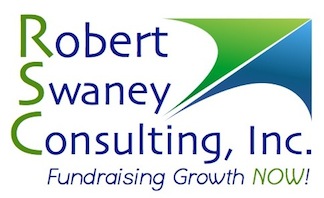The welcome email lands in your inbox: A new Chief
Development Officer (CDO) is starting at your non-profit. When this fine
fledgling bursts though the lobby, she’s donning a mask and cape. She is, after
all, a Development Superhero who excels at everything: asking, planning,
rallying the board, grant writing, and donor retention – she’s exactly who we
need to save our non-profit.
With the expectations placed on today’s fundraising professional, is it any wonder a CDO position has an 18-24 month average tenure at most institutions?
 |
| We Don't Need Another (Super) Hero! |
“We’ll hire a really good fundraiser and then our
organization can move on to other things” is not a good strategy. If your
fundraising program rests on one person’s shoulders, then the risk is high, the
goals will be in jeopardy, and burnout is nearly inevitable.
Skilled development professionals can be good leaders and
solid fundraisers, but they cannot single-handedly save your world. In response, RSC says, “Change your
expectations and thereby change your results.”
So, if not a superhero, what type of CDO do you hire? There are two distinct types: 1) the bold and assertive major gift officer always asking for money, and 2) the “never leave the office” tactician who effectively coaches others to raise money. Who is right for you?
It’s important for the Board to determine what type of CDO best fits the organization, then leverage her strengths and build a team around her. Once hired by a Board, the CDO is a key fundraising leader in the organization; she is hired to produce a team, while communicating and motivating others along the way. If attempting all of these roles of fundraising and leading on her own, she’ll become a superhero for a short time, then flame out fast.
The
CDO can strike a balance between leadership and super-heroism. Here’s how:
- Know why you were hired and play to your strengths;
- Build a team whose culture embraces the institution’s mission and complements you;
- Develop the “fundraiser” in each team member; and
- Be a leader who communicates fully and regularly
If
you are the CDO, it doesn’t matter if you’re the major gift type or a tactician,
or whether you have a staff of 12 or a staff of two. It’s your job to determine
which camp you fall in, identify strengths and weaknesses–and above all–fill in
the gaps. The CEO, board chair, and CDO must all be in alignment.
Communication and leadership, however, are also the responsibilities of the CEO and the Board. Here are five steps they can take to help ensure success:
- Share relationships: introduce the CDO to community influencers and decision makers;
- Value your CDO’s experience: listen carefully and treat this person as a peer;
- Err on the side of asking: the privilege of asking belongs to the team, not just the CDO;
- Avoid procrastination: when the CDO asks you to do something, do it right away; and
- Share the responsibility: spread accountability throughout the organization
The good news is that it’s never too late to apply these
principles within your organization.
Let’s save the superheroes for the big screen.
RSC can help build your fundraising program and your fundraising team. If you would like to learn more about how RSC successfully helps arts and cultural organizations reach their fundraising goals, call us at 317.300.4443 or visit our website.
RSC can help build your fundraising program and your fundraising team. If you would like to learn more about how RSC successfully helps arts and cultural organizations reach their fundraising goals, call us at 317.300.4443 or visit our website.
